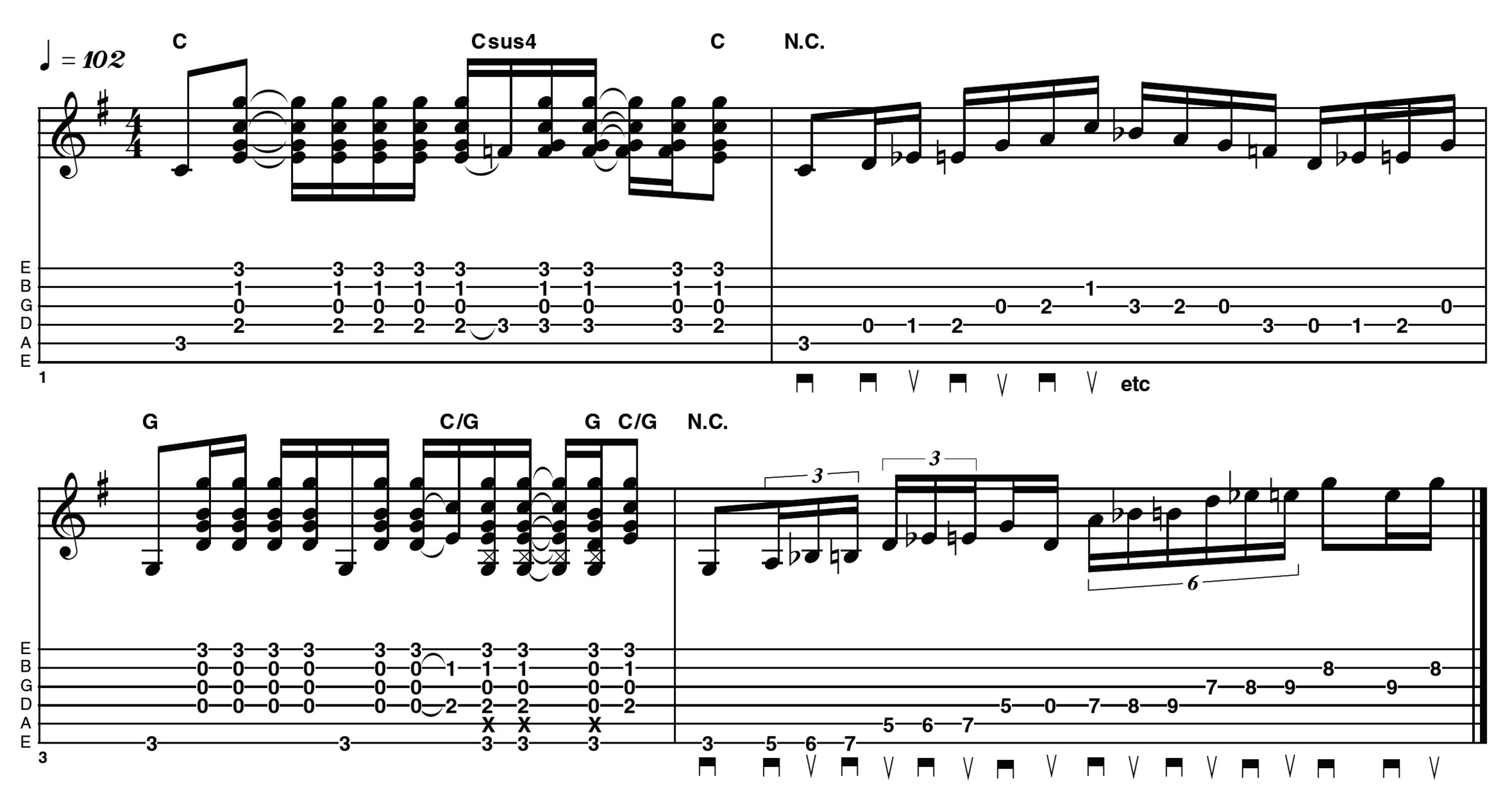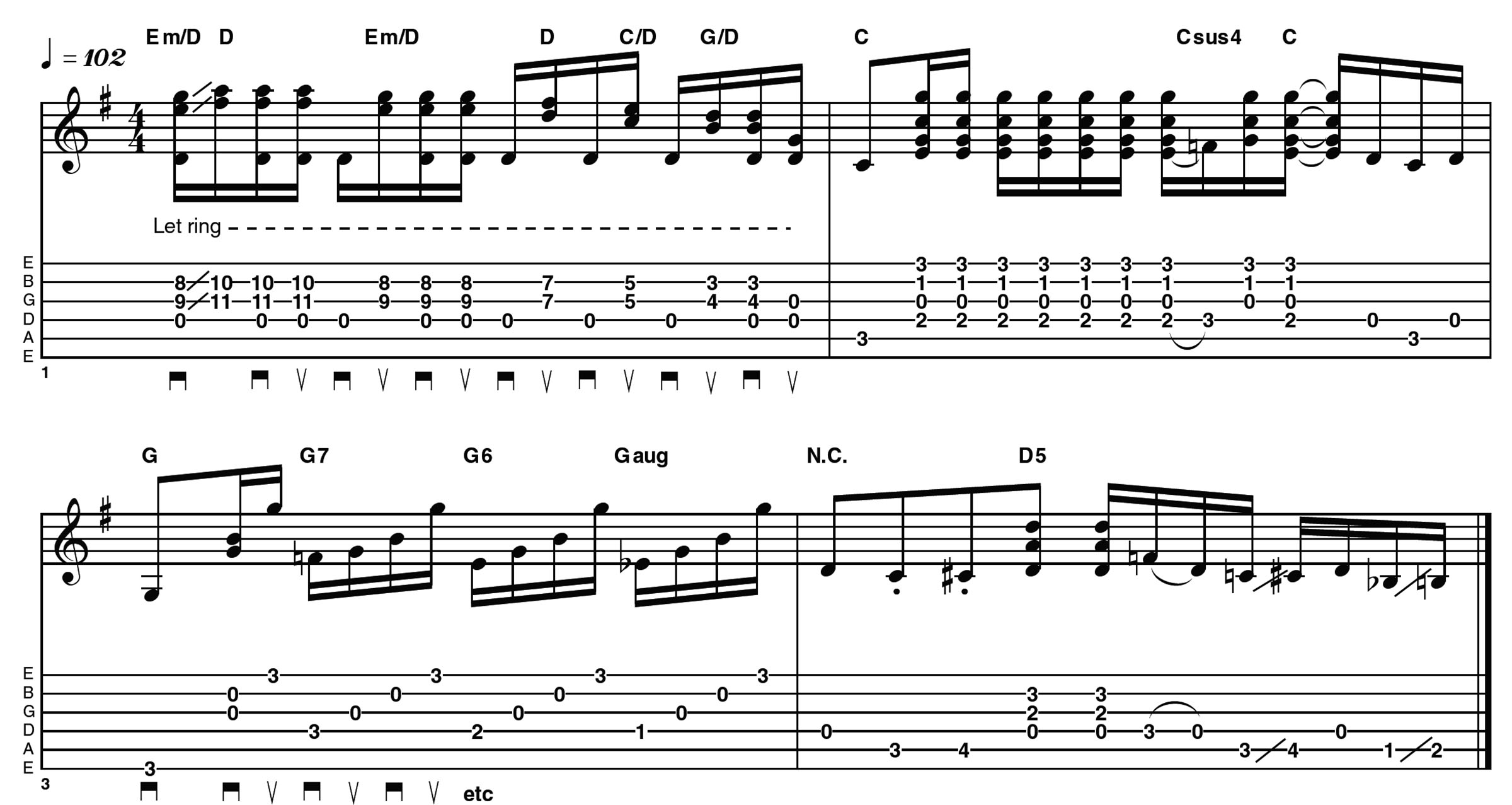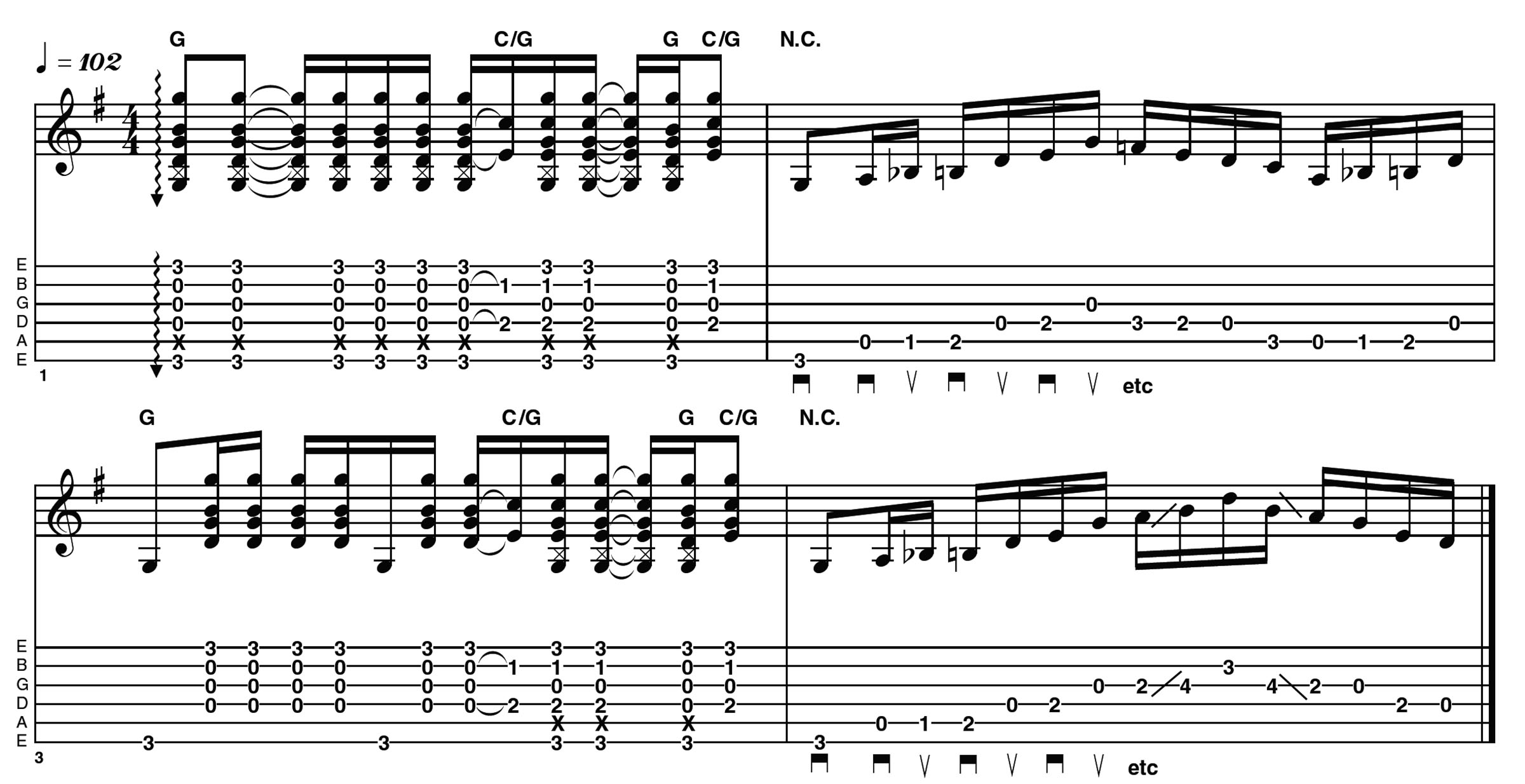
In this lesson, we’ll be looking at an unaccompanied acoustic piece. The tempo marked is approximate as this was played ‘freehand’ without a metronome. Flatpicking is a bit of a catch-all term since the piece contains crosspicking, alternate picking, Carter picking and strumming.
Crosspicking, as the name implies, uses the guitar pick to cross the strings, giving a similar effect to fingerpicking but with a bolder and more consistent tone. This is a different discipline to the two- or three-note-per-string alternate-picked scale patterns more commonly used when soloing.
Having said this, the crosspicked arpeggios towards the end of the example piece are alternate-picked, though there are other options. See the captions for more details on this.
The other technique mentioned is Carter picking. This is named after Maybelle Carter and involves picking out melodies and bass lines using the lower strings, while maintaining a strumming pattern on the higher strings.
This gives a more detailed accompaniment and can potentially sound like two guitars playing together. Although I’m not spelling out any traditional Carter picking licks in the example piece, it is very influenced by that approach, letting any strummed chords and open strings ring wherever possible.
Beyond specific picking styles, there are a couple of picking-hand positions worth considering to help with articulation. The strummed parts are played with a looser wrist, raised away from the guitar body.
For the single-note parts and arpeggios, try bringing your wrist in towards the guitar body until you can feel the heel of your hand resting lightly against the bridge. It’s amazing how much this can help with consistency on the single notes!
Example 1

We start with an upstroke rake across the G major chord. This is worth special consideration as the fifth string is muted, fretting only the lowest and highest notes with the third and fourth fingers of your fretting hand.
Perhaps the thumb could be used for that sixth string, but that’s up to you. The main thing is, the first and second fingers of your fretting hand are then free to add in the Am7 shape used as an embellishment in the second half of bars 1 and 3.
Bring your picking hand wrist in close to the guitar body for the alternate-picked lines.
Example 2

Staying with a similar format of alternating strummed and picked patterns, this example changes to C for bars 1 and 2.
Strictly speaking, this isn’t Carter picking, but the way it picks out the sus4 embellishment is very much from the same school of thought.
After returning to the G chord, there is a rapid alternate-picked triplet-based line, using the G major pentatonic scale. Again, keeping your wrist in close to the guitar body really helps with articulation.
Example 3

This descending double stop line is based around a D major chord. Notice how upstrokes are used to accent these. Another embellished C chord comes next, with that slightly Carter-picked influence again. This segues straight into the descending G major-based arpeggios.
These are alternate-picked, which seems counterintuitive at first but allows the picking to stay relaxed and consistent.
However, you could also try a ‘down-down-down-up’ economy picking approach, in case that works better for you. We finish with a bluesy lick around a D5 chord.
Example 4

This outro section is a recap of the main strumming pattern that begins the piece. Note that there is a bass note at the beginning of each measure, followed by strumming on the higher strings – another nod to the Carter family style.
In bar 3, there is a slide from E to F on the fourth string, giving a momentary sus4 embellishment to the G chord. This is a bit of a stretch, but it’s worth the effort.
Hear it here
Rob Ickes & Trey Hensley – Before The Sun Goes Down
Tennessee-based musician Trey Hensley was voted 2023 Guitar Player of the Year by the International Bluegrass Music Association – and it isn’t hard to see why.
This album is a collaboration with Rob Ickes on resonator/slide guitar and features some particularly impressive playing from both of them.
Check out Lightning, Georgia On A Fast Train and Workin’ Man Can’t Get Nowhere Today to hear all the techniques featured in the example piece in a ‘real‑world’ context.
Molly Tuttle & Golden Highway – Crooked Tree
Molly Tuttle has become very respected over the past few years, articulating the featured techniques at breakneck speed – all while singing! Check out She’ll Change, The River Knows and Nashville Mess Around.
Apart from her technical chops, there is an assuredness about Molly’s rhythm playing that underpins the whole thing. The good news is practising the techniques from the example piece is a very effective way of moving toward that point in your own playing.
Maybelle Carter – Folk Legend
The title says it all – so let’s go back to the origin of many of today’s bluegrass/flatpicking techniques. Maybelle manages to articulate strummed chords and melodies simultaneously on (Bury Me Under The) Weeping Willow, Wildwood Flower and Lover’s Farewell.
These are just three examples pulled from an album containing 41 tracks, but their relatively stripped-back arrangements really highlight how self-contained a single guitar can be when handled right.
- This article first appeared in Guitarist. Subscribe and save.







